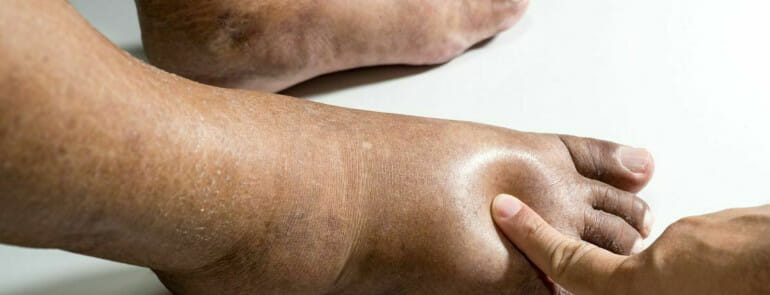I tend to gain weight quite easily, especially on my face, hands and feet. Recently, I visited a friend and she was surprised to see how much weight I had gained, ‘Are you pregnant’ were her first words- Not a ‘How you doing’, ‘Happy New Year’…. You know! You see the thing is, I hadn’t been to the gym for several months, and yes, the weight was showing. And my response was a huge ‘NO’. She continued by saying maybe it was water retention.
What’s that you may ask? Water weight gain—otherwise referred to as water retention or bloating—can feel uncomfortable, and while its causes are often benign, excess water retention can be a sign of a more serious condition. Weight fluctuations throughout the day, week and month are common and even expected due to changes in a person’s diet, hormones, exercise routine and other factors. However, it’s important to know when other health factors may be at play.

Water retention, also known as edema, is swelling in parts of the body. You can experience water retention in the legs, ankles, or feet as well as the face and hands, like I do. Fluid retention is often caused by the increase of blood pressure on the veins which adds to the pressure on the capillaries. The irregular changes in the blood vessels are often associated with eating habits.
Common causes of water retention include:
- Changes in activity levels, such as more time spent sitting
- Hormone fluctuations, such as during the menstrual cycle
- Changes in diet, such as increases in sodium
- Medical conditions, such as kidney or liver disease
So how does one recognize water retention in the body? It is typically first noticed because of the swelling of extremities. One indication of water retention is difficulty to lose weight despite diet efforts. The physical signs are more evident, however. Physical signs of water retention include swollen ankles and unexplained weight gain over a short period of time.

Also, rings may not fit anymore and the stomach may feel swollen.One way to find out if you are retaining water is by gently pressing the foot, ankle or calf with slow, steady pressure using the thumb. If edema is present, an indentation will show on the skin.
There are two extensive types of fluid retention. The first one is generalized oedema that is characterized by swellings all over the body. The second type is the localized oedema that affects particular body parts. This condition is most common in the legs and feet, and can also affect the face, hand, and arm areas.
A specific kind of localized edema called lymphedema is where fluids build up in a leg or an arm because of an obstruction in the lymphatic system (the body’s second circulatory system). This condition might be inherited or may be a result of an injury in the lymphatic vessels. In this type of fluid retention, the symptoms consist of severe fatigue, discoloration of skin, heavy-swollen limb, and eventual deformity of the affected area.
One way to reduce water retention is by increasing potassium intake by eating healthy foods such as vegetables and fruits. These foods contain nutrients that help prevent blood vessels from leaking fluid in the tissue spaces. Eating food high in potassium is recommended rather than taking potassium supplements. Aside from potassium, intake of Vitamin B6 or pyridoxine can also help. Reducing the consumption of high sodium foods is important because too much sodium in the blood can affect the tissues causing them to retain water.
The next time you catch a reflection of yourself in the mirror, and notice some extra curves, don’t be alarmed. It may just be water, not fat!

